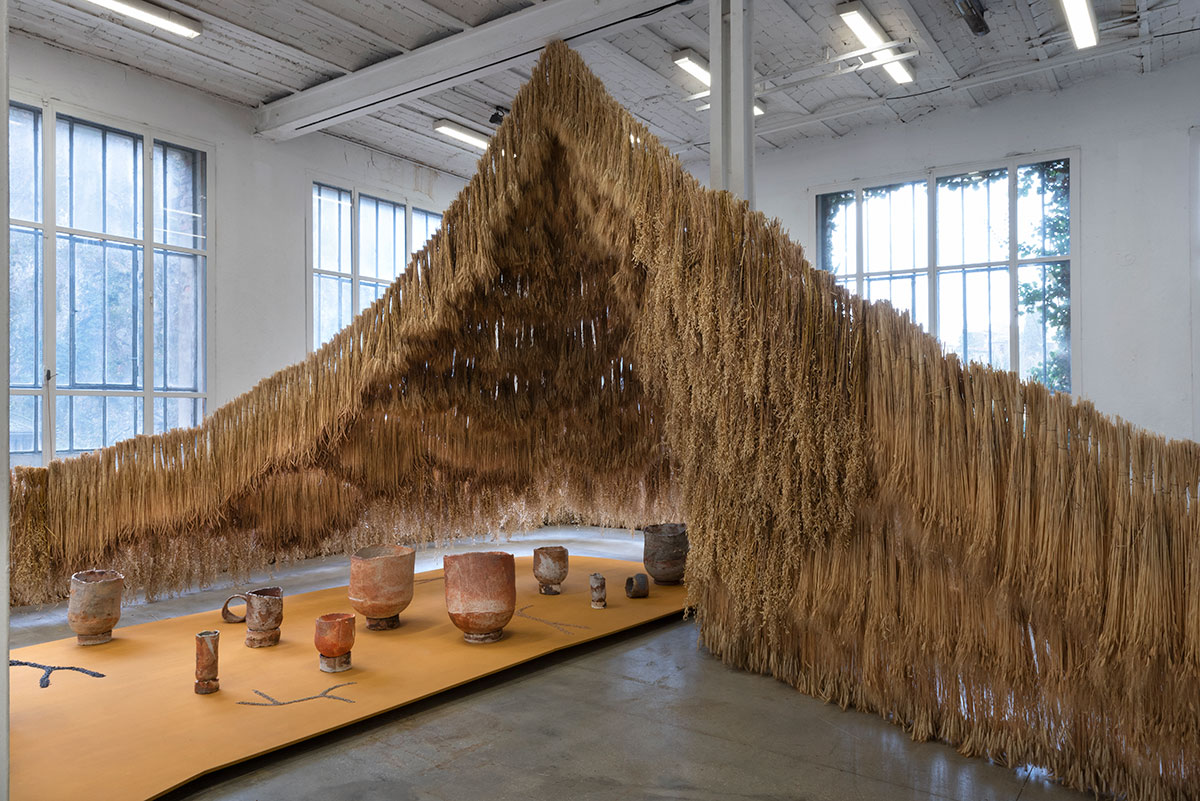PRESENTATION: Hélène Bertin & César Chevalier-To Cut the Wind in Three
 “Couper le vent en trois” [To cut the wind in three] is an exhibition that gives free reign to joyous experimentation, collective work and the unique sensitivity that arises from the porous domains of art, horticulture and viniculture. Its title based on a long-obsolete expression, suggests a bold and magical gesture much like those at the origin of the project and others that will extend it into the future.
“Couper le vent en trois” [To cut the wind in three] is an exhibition that gives free reign to joyous experimentation, collective work and the unique sensitivity that arises from the porous domains of art, horticulture and viniculture. Its title based on a long-obsolete expression, suggests a bold and magical gesture much like those at the origin of the project and others that will extend it into the future.
By Dimitris Lempesis
Photo: Palais de Tokyo Archive
Defined in the 18th century as “the most useful, the most widespread and perhaps the most essential of all the arts”1,agriculture animates Hélène Bertin’s current practice, dialoguing with and extending her past works and research. Hélène Bertin and the artist and future-winegrower César Chevalier, who she has invited to collaborate with her on this project, have jointly created part of the exhibition. Here, they play the role of two mediators amongst a larger group who aim to pass on knowledge, skills, and respect for vinicultural practices. The first part of the exhibition unfolds a narrative within a horticultural architecture where nourishing plants are cultivated with handmade tools and visitors become pollinators of this installation. As much a researcher and historian as a sculptor, Hélène Bertin brings together the tools of a forest gardener, a 19th century greenhouse, and a collection of plant diagrams still used in university-level botanical teaching. These enlarged flowers are intermingled with imaginary fruits made of porcelain “matured” in a wood-fired noborigama kiln that invade the greenhouse like climbing plants. The greenhouse, which belongs to a market gardener who lives next door to the artist, will later play host to cultural events and moments of sharing around the living world. The second part of the exhibition consists of the most recent step of an ongoing project begun by Hélène Bertin and César Chevalier a number of years ago. Together, the duo have immersed themselves in all stages of the winemaking process, exchanging with professionals and amateurs around the links between earth, taste, micro-organisms, and ways of working with time and with different environments. The installation presented here is a stage in the duo’s journey, and brings together the fruit of their winemaking, sculpted tools, and stories of harvest or inebriation. The artists assemble processes and forms that honour the invisible labour of yeast as well as the polyphony of agricultural knowledges and the beliefs that have sprung up around them. Alongside this exhibition, they are also publishing the book Jacques Néauport, le dilettante, in partnership with the magazine LeRouge&leBlanc, which seeks to share the knowledge and thoughts of one of the leading figures in the field of natural wine.
Hélène Bertin was born in 1989 in the Luberon, and lives and works in Cucuron. Her work pays close attention to objects and practices that unite everyday uses and plastic research, with her practice built around encounters with amateurs, artists, farmers and craftspeople. Hélène Bertin deftly assembles different ways of living and forms of knowledge. This interweaving of object typologies and attitudes creates a shared narrative across her exhibitions, while her books explore the individual stories of marginal personalities. In particular, the discovery of the life and work of Valentine Schlegel has been central to her vision of art and of the possible cooperation between the “kingdoms” of each individual being.
César Chevalier was born in 1989 and lives and works wherever the harvest calls him. After studying philosophy, he entered the École des Beaux-Arts de Paris where he developed his practice as a sculptor. In 2015 he co-founded DOC, a production and distribution space housing artists’ studios in the 19th arrondissement of Paris, which functions as a mutual aid structure for sharing practical and theoretical forms of knowledge. He oversaw DOC until 2017, co-creating a free university and organizing encounters around poetry, theatre and politics, whilst also working as an Art Deco furniture restorer. This engagement with new techniques fuels his utilitarian sculptural practice, which he presents in group exhibitions.
Photo: Hélène Bertin, Le Jardin des Paniers, 2020, ceramics created in duo with Jacques Laroussinie (wood-fired stoneware in a noborigama kiln) draped with cereals (small and large spelled, durum and soft wheat, oats, rye), hand-painted wood flour and ocher paint. View of the exhibition “Cahin-caha”, the Hollow of Hell (Thiers). Courtesy of the artist. Photo credit: Vincent Blesbois
Info: Curator: Adélaïde Blanc, Palais de Tokyo, 13 avenue du Président Wilson, Paris, France, Duration: 15/4-4/9/2022, Days & Hours: Mon & Wed-Sun 12:00-24:00, https://palaisdetokyo.com







